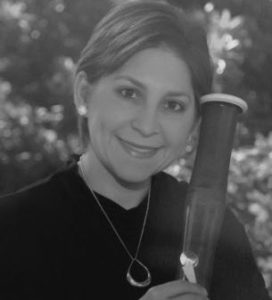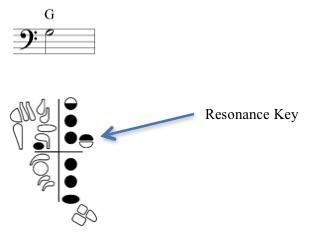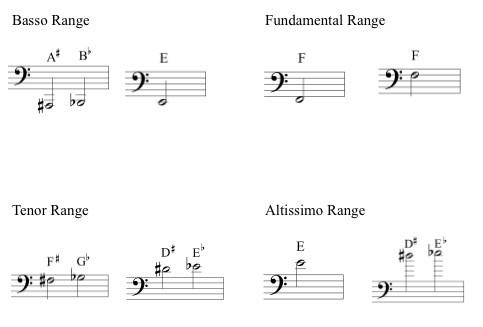Monday, October 1, 2018

There is a key on the bassoon called the "resonance key" (depressed by the left hand pinky). This key is supposed to be used for middle G (as well as for high notes), affecting tuning and timbre. It is the most commonly forgotten key in bassoon playing, but it makes a BIG difference. This article describes when and why to use the resonance key.
 I often explain to my students that the bassoon, in many respects is just a big recorder. With a reed. And a lot (I mean A LOT) more keys. The way that fingerings create different pitches, like all of the woodwinds, is based on different ranges and over blowing to produce series of notes in higher partials. The ranges that I find there to be on the bassoon are: the basso range, the fundamental range, the tenor range and the altissimo range. Notes in the fundamental range are just like the first notes you learn on the recorder. Easy, simple, obvious -- fingers go up, fingers go down. These notes would exist on the bassoon even if there were no keys at all and simply holes. There is no need to change anything about air, embouchure, or voicing because these notes are not created with higher partials. Pitch is fairly stable assuming the reed, air, and embouchure are appropriate, as well as stable.
I often explain to my students that the bassoon, in many respects is just a big recorder. With a reed. And a lot (I mean A LOT) more keys. The way that fingerings create different pitches, like all of the woodwinds, is based on different ranges and over blowing to produce series of notes in higher partials. The ranges that I find there to be on the bassoon are: the basso range, the fundamental range, the tenor range and the altissimo range. Notes in the fundamental range are just like the first notes you learn on the recorder. Easy, simple, obvious -- fingers go up, fingers go down. These notes would exist on the bassoon even if there were no keys at all and simply holes. There is no need to change anything about air, embouchure, or voicing because these notes are not created with higher partials. Pitch is fairly stable assuming the reed, air, and embouchure are appropriate, as well as stable.

As we add ranges above the fundamental (and chromatic pitches) the notes become less stable pitch-wise. This is due to the fact that, from a physics standpoint, the notes are being produced with pure overtones (not equal-tempered) yet we use an equal-tempered tuning system (hence the discrepancy). We all know that a "pure" Pythagorean (or Just-tuned) major third is 14 cents flatter than equal, and this is frequently demonstrated to students when we ask them to play this interval and to "make the waves disappear."
So what in the world does Pythagoras have to do with the resonance key? When we play the middle G on the bassoon it comes out at least 20 cents sharp. When my students play it. When I play it. When you play it. It's sharp. I don't have to tell you how important tuning is. When we play out of tune, it does not sound pleasant and satisfying. The middle G is the primary first note over the break of the bassoon (into the tenor range). I should say that technically F-sharp is the very first note over the break, but I want to deal with G here. So the G needs a few things in order to bring it into line with the surrounding notes. The G needs the player to use a relaxed embouchure (don't pinch), voicing in the throat that is moderate (not as open as the low notes, but not too tight or high--I use "eh"), and it also needs the resonance key. The resonance key helps bring the note in tune and also helps the timbre match the notes around it. In demonstrating the power of the resonance key, I do this experiment with my students: Play the G without the resonance key. Then, change nothing else but add the resonance key and notice the sound and tuning difference. It may bring the note completely into tune (but remember this note also needs some help from the embouchure and voicing). It's a pretty remarkable difference!
Easy, right? So why doesn't everyone use the resonance key? It's on the fingering chart. The teacher said to use it. Are they using it? No. Why? Here's why they don't use it:
- The note will speak and come out just fine without it (not in tune, mind you).
- It's easier to not depress the pinky.
- The lower G does not use this key, so it seems natural for the upper note not to (and they learn the lower G fingering first.)
From a learning perspective, it is simpler in the long run to learn something correctly initially than to have to go back and re-learn something. So when I teach this new note I am very careful to monitor the use of the resonance key with the students. If a student has already gotten used to not using it, I do note-connection exercises and songs with the middle G, reinforcing the use of the resonance key. I tell them if I "catch them in the act" of using the resonance key without me having to remind them then they get a positive reinforcement (sticker, etc.). Then they're on their way to using it whenever they play that note.
There are several other notes and ranges where the resonance key is used, but that is for a different discussion. These techniques have worked great with my students and I hope this helps you as well.
| Jennifer Auerbach [CEO] is the founder of the Bocal Majority organization. She holds a Bachelor's degree in bassoon performance from Chicago Musical College and Master's and Doctoral degrees in music theory from the University of North Texas. She has taught private bassoon lessons in the Dallas metroplex since 1998 and has given numerous clinics at the Texas Music Educators' Convention, the International Double Reed Society, and many other conventions. Along with her partner, Sally Bohls, she has co-authored a method book for first-year double-reed classes. Dr. Auerbach was a Fulbright grant recipient to study in Austria in 2005, she is the principal bassoonist of the Richardson Symphony and contrabassoonist of the Lone Star Wind Orchestra. She resides in Dallas with her husband and 7 cats. |
